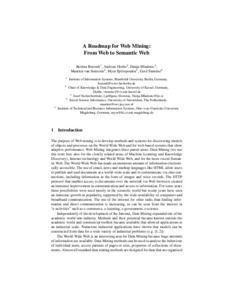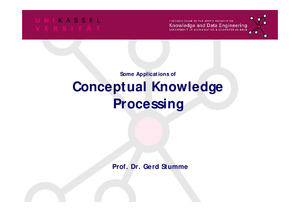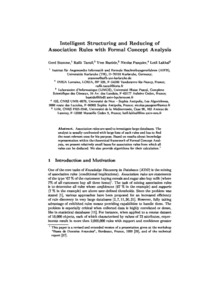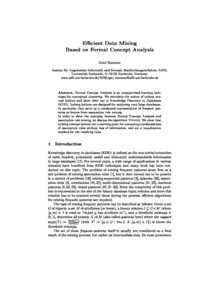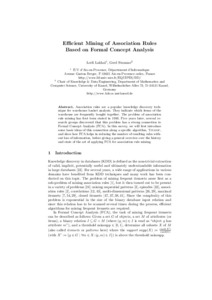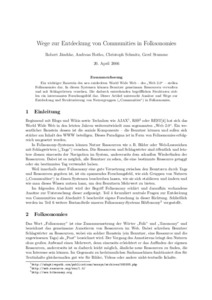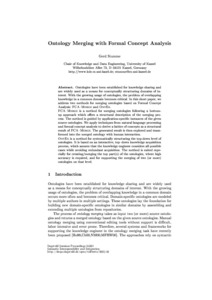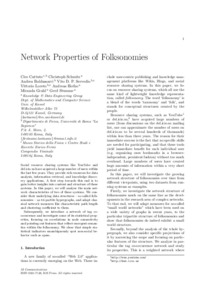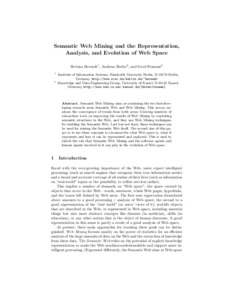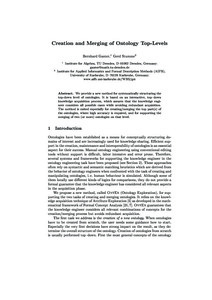Suche
Anzeige der Dokumente 1-10 von 24
Preprint
 Intelligent structuring and reducing of association rules with formal concept analysis
Intelligent structuring and reducing of association rules with formal concept analysis
(2001)
Association rules are used to investigate large databases. The analyst is usually confronted with large lists of such rules and has to find the most relevant ones for his purpose. Based on results about knowledge representation within the theoretical framework of Formal Concept Analysis, we present relatively small bases for association rules from which all rules can be deduced. We also provide algorithms for their calculation.
Preprint
 Efficient data mining based on formal concept analysis
Efficient data mining based on formal concept analysis
(2002)
Formal Concept Analysis is an unsupervised learning technique for conceptual clustering. We introduce the notion of iceberg concept lattices and show their use in Knowledge Discovery in Databases (KDD). Iceberg lattices are designed for analyzing very large databases. In particular they serve as a condensed representation of frequent patterns as known from association rule mining. In order to show the interplay between Formal Concept Analysis and association rule mining, we discuss the algorithm TITANIC. We show that ...
Preprint
 Efficient mining of association rules based on formal concept analysis
Efficient mining of association rules based on formal concept analysis
(2005)
Association rules are a popular knowledge discovery technique for warehouse basket analysis. They indicate which items of the warehouse are frequently bought together. The problem of association rule mining has first been stated in 1993. Five years later, several research groups discovered that this problem has a strong connection to Formal Concept Analysis (FCA). In this survey, we will first introduce some basic ideas of this connection along a specific algorithm, TITANIC, and show how FCA helps in reducing the ...
Preprint
 Wege zur Entdeckung von Communities in Folksonomies
Wege zur Entdeckung von Communities in Folksonomies
(2006)
Ein wichtiger Baustein des neu entdeckten World Wide Web - des "Web 2.0" - stellen Folksonomies dar. In diesen Systemen können Benutzer gemeinsam Ressourcen verwalten und mit Schlagwörtern versehen. Die dadurch entstehenden begrifflichen Strukturen stellen ein interessantes Forschungsfeld dar. Dieser Artikel untersucht Ansätze und Wege zur Entdeckung und Strukturierung von Nutzergruppen ("Communities") in Folksonomies.
Preprint
 Ontology merging with formal concept analysis
Ontology merging with formal concept analysis
(2005)
Ontologies have been established for knowledge sharing and are widely used as a means for conceptually structuring domains of interest. With the growing usage of ontologies, the problem of overlapping knowledge in a common domain becomes critical. In this short paper, we address two methods for merging ontologies based on Formal Concept Analysis: FCA-Merge and ONTEX. --- FCA-Merge is a method for merging ontologies following a bottom-up approach which offers a structural description of the merging process. The method ...
Preprint
 Network properties of folksonomies
Network properties of folksonomies
(2007)
Social resource sharing systems like YouTube and del.icio.us have acquired a large number of users within the last few years. They provide rich resources for data analysis, information retrieval, and knowledge discovery applications. A first step towards this end is to gain better insights into content and structure of these systems. In this paper, we will analyse the main network characteristics of two of these systems. We consider their underlying data structures â so-called folksonomies â as tri-partite ...
Preprint
 Semantic web mining and the representation, analysis, and evolution of web space
Semantic web mining and the representation, analysis, and evolution of web space
(2005)
Semantic Web Mining aims at combining the two fast-developing research areas Semantic Web and Web Mining. This survey analyzes the convergence of trends from both areas: Growing numbers of researchers work on improving the results of Web Mining by exploiting semantic structures in the Web, and they use Web Mining techniques for building the Semantic Web. Last but not least, these techniques can be used for mining the Semantic Web itself. The second aim of this paper is to use these concepts to circumscribe what Web ...
Preprint
 Creation and merging of ontology top-levels
Creation and merging of ontology top-levels
(2003)
We provide a new method for systematically structuring the top-down level of ontologies. It is based on an interactive, top-down knowledge acquisition process, which assures that the knowledge engineer considers all possible cases while avoiding redundant acquisition. The method is suited especially for creating/merging the top part(s) of the ontologies, where high accuracy is required, and for supporting the merging of two (or more) ontologies on that level.

